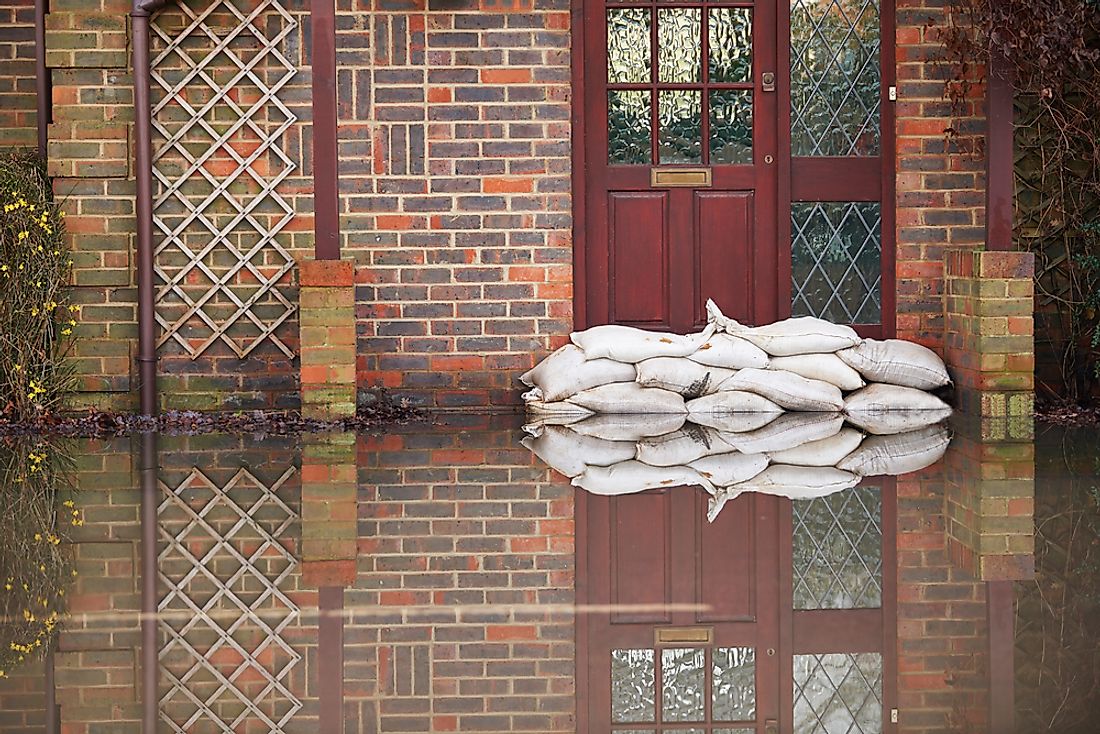How Many Types Of Floods Are There?

The submergence of land that is usually dry by an overflow of water is known as flood. Floods can be classified into different types as mentioned below:
1. Areal Floods
Areal floods are caused when excessive snowmelt or high rainfall accumulates on land, sometimes to hazardous depths. Flood happens when surface soil becomes saturated so that water can no longer seep underground. Such events are more common in areas where the water table is shallow like a floodplain or when rain falls incessantly due to a series of storms. Also, the nature of the ground influences infiltration of water. Frozen, rock or concrete grounds act as barriers to water infiltration. Areal flooding is also common in endorheic basins when precipitation exceeds evaporation.
2. Riverine (Channel) Floods
Floods occur in all types of stream and river channels due to a variety of reasons. Landslides, ice, debris, increased precipitation, higher speed of glacial melt, tropical cyclones, thunderstorm, etc., are all factors that might trigger a sudden rise in the water level of the flowing water body. Muddy floods are produced when huge volumes of sediments from the flooded land are carried as run-off by the river or stream either in the suspended form or as bed load. Areas with dry climate are usually susceptible to sudden, rapid flooding events like flash floods. In dry areas, rivers might have a large basin but narrow channels and a seasonal spike in rainfall is sufficient to trigger a rapid flooding event. One example of a river that causes frequent devastating floods is the Yellow River of China which is thus nicknamed as “China's Sorrow.”
3. Estuarine And Coastal Floods
Estuarine floods are usually caused by high-velocity winds or low barometric pressure. A higher river flow at the upstream of the river might also inundate the downstream estuarine banks of the river.
Coastal floods are caused by storm events at the sea like tropical cyclones or, in extreme cases, by tsunamis. Such extreme weather or geological phenomena generate massive waves that inundate coastal areas. Coastal floods are the most extreme in nature as large volumes of water wipe away everything that comes in the path into the sea. Coastal floods are also predicted to increase in the future due to global warming induced sea level rise.
4. Urban Flooding
When the inundation of a built environment, especially an area of dense population occurs, it is called urban flooding. Several factors might lead to flooding of urban areas like excessive rainfall, snowmelt, flash flooding, etc. Such types of flooding might recur or be more forceful in urban areas without proper drainage systems. Urban flooding strongly affects communities living in the flooded areas. Floodwater might accumulate on property, seep through the floors of buildings via sewer pipes, sinks, and toilets and create a completely unhygienic situation in the urban environment.
Floodwater in urbanized areas acts as a hazard to both the infrastructure and population. Some of the recent examples of devastating urban floods include the 2005 flooding of New Orleans (USA), 1998 inundations of Nîmes (France), and 1992 inundations of Vaison-la-Romaine (France).
5. Catastrophic Flooding
- Catastrophic flooding is caused by a sudden, unexpected change in the environment that is powerful enough to trigger flooding of large areas. Such floods usually have a devastating impact on life and property in the flooded areas. So, what causes such floods?
- Failure of infrastructure: Catastrophic floods might be caused by a major infrastructure failure like the collapse of a dam.
- Drainage channel modification: Earthquakes, landslides, and volcanic eruptions often trigger a change in the topology of land, shifting water channels to a completely new position. Such drainage channel modification due to a catastrophic event might trigger deadly floods. Lahars and outburst floods are examples of such catastrophic floods.
- Tsunamis triggered by undersea earthquakes are also examples of catastrophic flooding and can have a devastating effect on coastal areas at the receiving end of the tsunamis.











